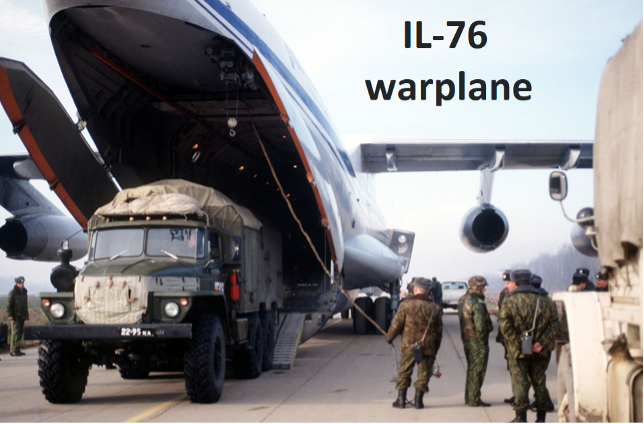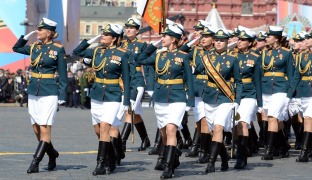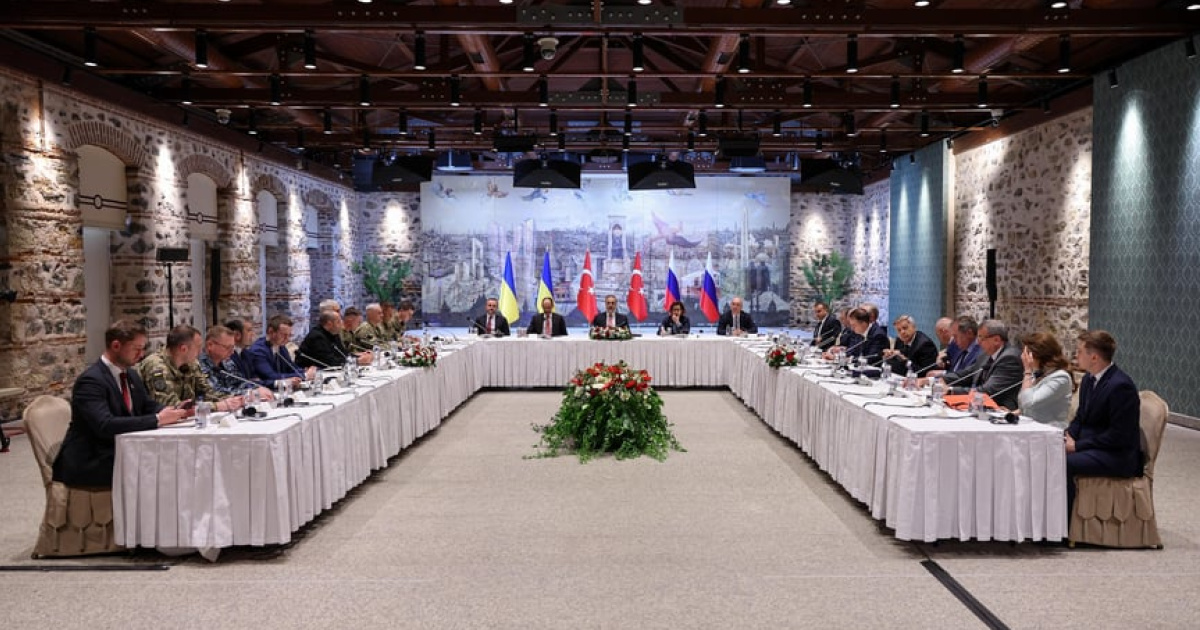Investigation is completed. Ballistic forensics found the crime weapon. The “guilty” were even threatened with heavenly punishment, and it wasn’t figurative. But there are so many inconsistencies in this story with Rogozin's buttocks that you will inevitably become an adept of conspiracy theory. Although, in this case, everything is way too obvious...
On December 21, former head of Roscosmos Dmitry Rogozin celebrates his 59th birthday at Shesh-Besh, a chain hotel with a restaurant, at 11 Araratska Street on the outskirts of Donetsk (in Lenin’s District). There, Rogozin has a favorite room where he often stays. Both the hotel location and the location of the room in it are excellent in terms of security. The hotel is far from both the front and any strategic targets. And he can get into the room practically unnoticed.
The guests have gathered, but Khotsenko, the “DPR Prime Minister,” is late. He arrives at about half past seven p.m. And, literally 15 minutes later, a shelling starts. There were four hits: into the yard (a ranging shot), into Rogozin's top-floor room, and into the restaurant. We know all of this from Rogozin's photos and posts on his Telegram channel. The links referenced in the article take the readers to exclusively to Russian sources.
Rogozin’s first report on the shelling takes place in his Telegram the next morning. He’s still in shock: “they hit with a caliber of 120 or 155 mm,” he writes. The same morning, RIA Novosti quoted Rogozin's doctors who were trying to extract a "mine fragment" from him. These two posts give the cue to the answer of what was the weapon and where the shelling was from.

December 22
ROGOZIN
It was a working meeting, in a narrow circle and in a calm atmosphere after returning from one of our volunteer units. We have lived in this hotel all the last months, and for 8 years the enemy has never shelled this place. Someone leaked information, and around 19:45 there were several high-precision hits, including in the place where we were directly located. They beat me with a caliber of 120 or 155 mm. The investigation will determine where and who.
I have a wound, a metal fragment measuring 8x6 mm entered above the right shoulder blade. An operation is coming. Several other people close to me were also injured.

December 22
RIA Novosti
According to doctors, a fragment of a mine that got into Rogozin's spine cannot be removed, he considers his condition to be satisfactory, his assistant said.
The gunners were firing a 120-mm mortar from a distance of less than 7 km. Why? Because from such a range the mortar strikes accurately, and we see that only one shot (the first one) did not hit the hotel building. There are mine types that increase the maximum range of a 120 mm mortar to 12 km, but in any case, the accuracy of a shot at maximum range deteriorates. This was not the case here.
The distance between Shesh-Besh and the front line at that time was almost 20 km. And no, Rogozin would never stay with his wife in a hotel that is at a distance of a mortar shot or other infantry artillery, while 20 km is a much safer distance.

The analysis of a crater from a shot in the yard near Shesh-Besh unequivocally (A) indicates that the caliber was 120 mm and (B) makes known the direction from which the mine was fired. See the photo of the crater below, photographed by TASS on the same night.
See a man showing a crater for a ranging shot in the yard near Shesh-Besh. This crater is typical for a 122-mm mine but not for a 155-mm howitzer.


All photos: Valentin Sprinchak/TASS, taken from Rossiyskaya Gazeta website, December 22, 2022.
The nature of the destruction of the building clearly indicates that it was a caliber of 120 mm and not 155 mm. You don't even have to be an expert to see this.
Now, let's try to understand the motives and capabilities of those who may be interested in the assassination attempt on the ex-"cosmonaut."
As we have already shown, the Armed Forces of Ukraine were not able to deliver a mortar strike from such a distance. One can theorize about a Ukrainian sabotage group who brought heavy mortars on trucks. But then this raises serious questions for the FSB, on whose territory Ukrainian scouts feel so at ease. Still, mortars’ precision salvo is not the type of sabotage complained about in separatists’ social media (most recent meme, saboteurs pooped near the spring).
Ukraine’s motive is also questionable. After resignation, Rogozin is no longer a high-value target for the Armed Forces of Ukraine. Moreover, when we recall his conflict with Prigozhin, the Wagner PMC owner, for popularizing NATO uniform, and his competition for visibility with Donbass separatist leaders, then Dmitry Rogozin becomes even a useful character to Kyiv.
Rather, those who did the Rogozin assassination order and attempted to carry it out should be sought among the ones who had both a motive and an opportunity. The circle of such people is small. Let's analyze it.
The first to come to mind is the commander of the “Special Military Operation” Gen. Gerasimov. Being the Chief of the General Staff of the Russian Federation, he directly dealt with Rogozin, a skillful PR specialist and shrewd spinner who held high public offices in the Russian defense industry. For seven years, Rogozin served as vice prime minister of the Russian government in charge of the military-industrial complex. Thereafter, he headed Roscosmos for three years. Eloquent and hypocritical, Rogozin was a troubadour of patriotism and the face of the Motherland Party, but also a clueless manager with proclivity for nepotism. Rogozin brought his son and nephew to the defense industry, and disrupted the modernization of the Il-76 warplanes, which failed Gerasimov in Hostomel airfield near Kyiv and Chornobaivka airfield near Kherson.

While at Roscosmos, Rogozin could not deliver on the tasks of satellite navigation and weapon guidance, for which he was fired. The Kremlin allowed Rogozin, however, to look for his niche in the “Special Military Operation.” That could not please Gerasimov at all. Gerasimov’s archenemy, Prigozhin, didn’t like it either and showed it in public in excess. This showdown became a trigger for the strategist Gerasimov to decide to kill two birds with one stone: to remove one enemy, and to blame the other one for eliminating him.
Now about the possibilities to crank out such an operation. It was theoretically possible to launch several mortar volleys from a park area near the Rakovka Pond in Tekstilshchik Neighborhood without being noticed by local residents. But it would be IMPOSSIBLE that the shelling is overlooked by the Donetsk separatists’ “Ministry of State Security” and the military, the so-called “Donetsk People’s Militia.”
The “People’s Militia” that control the part of the front line behind which Shesh-Besh is located is fully integrated in Russia’s Southern Military District. The “Ministry of State Security of the Donetsk People’s Rep.” is one of the security bodies responsible for the rear of the “People’s Militia.” This means that a close coordination of the military and the “Ministry of State Security” was necessary in order to carry out the mortar shelling of Shesh-Besh. There is only one person who could carry out the coordination of this sort, and it is Denis Pushilin, the “head of the Donetsk People’s Republic.” Coincidentally, he himself came to power owing to the murder of his predecessor Alexander Zakharchenko that was carried out as sabotage.
“It was a terrorist attack,” immediately declared Pushilin in an unusual move. Rogozin himself confirmed this indirectly, saying that the shelling was carried out on a tip. That is, someone who was nearby and knew where the guests would gather and when the “prime minister” has arrived had to be an accomplice. It is doubtful that after so much time, the Russian almighty FSB has not identified this person among the hotel staff or guests or whoever. After all, the circle of suspects is limited, and this person must have used the means of communication. Therefore, only one conclusion can be drawn: if they didn’t find anyone in a month and a half, then they probably didn’t really want to.
Everyone heard, however, about very recent instances of Prigozhin bullying Dmitry Rogozin. For example, two and a half weeks before the Shesh-Besh shelling, Wagner PMC wrote in Telegram: “We already see how wonderfully our satellites fly … I think that trips [of Rogozin to the front] are absolutely useless … I think that if he tried to meet with one of the Wagnerites, he would hardly have been accepted.”
It is also a suspicious coincidence that on the day when Shesh-Besh was fired on, that is December 21, six armed Wagner prison-recruited soldiers escaped from their unit. This has been the only case since the Wagner units have a strict system of control over prison-recruited staff. Aren’t these excellent candidates for the role of the perpetrators of the assassination attempt on Rogozin organized by Wagner?
But "expert" statements about shelling not with a mortar, but with 155 mm NATO caliber artillery, destroyed the opportunity to accuse Wagner PMC. It is understandable why Putin's media focused on implicating NATO in the shelling: it is of no use for the Kremlin to show the conflict between the warring factions of the Russians themselves, while on the flipside, it is beneficial to blame the West for the shelling of a civilian object.
Although military correspondent Kots ironically said that the shelling was carried out not by 155-mm caliber shot from the French Caesar howitzers, but from HIMARS multiple-rocket launcher. The military correspondent knew well that the Shesh-Besh building would not have intact from HIMARS, as it happened with Makeyevka vocational school #19 where the troops were quartered.
Rogozin was already trumpeting only about the 155-mm caliber and that it was the West who made an attempt to kill him.
The Investigative Committee of the Russian Federation went even further and issued a statement that it was not just the 155-mm caliber but also that it was fired from the French Caesar howitzer. The fact is, it is not realistic to determine from which howitzer a particular standard ammunition was shot.

December 22
Ukraina.ru
The attack on the hotel where were Rogozin and Prime Minister of the DPR Khotsenko, presumably, was carried out from the French howitzer Caesar - Russian Investigative Committee
Rogozin did not seek the truth. He decided that since he had survived, he’d do the most to promote myself. He kept announcing without substantiation that 155 mm shells were fired by French howitzers. He wrote a tearful open letter to the French Ambassador to Russia. And then he got carried away completely in one of the interviews where he said that several shells fell under his feet in Shesh-Besh but did not explode. Also, Rogozin said that, using his Roscosmos connections, he’s been monitoring the Caesar howitzer crew to prepare the retribution…
Let's summarize.
The shelling of Rogozin's ass was in fact an attempt on the life of the former Deputy Prime Minister of the Russian Federation in charge of the military-industrial complex. The military of the Russian Federation, subordinate to Gen. Gerasimov and covered by the “Ministry of State Security of the Donetsk People’s Republic”, had the opportunity to carry it out. Mortars of 120mm caliber shelled Shesh-Besh from the rear of the Russian troops from the zone of responsibility of the “Donetsk People's Militia.” Since this fact was not hidden at the beginning, it is easy to conclude that it was planned to search for the assassins in the rear, and the investigation into the escape of six armed Wagner soldiers could well lead to Prigozhin himself. But... either the Kremlin decided to hush up a public showdown between their own, or circumstances forced Gerasimov and Pushilin to move away from the risky plan to discredit the Wagner “conductor”.
Oleh Dmytrenko, for OstroV




